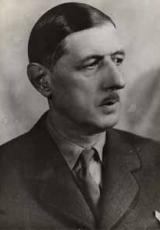The harkis’ Algerian War
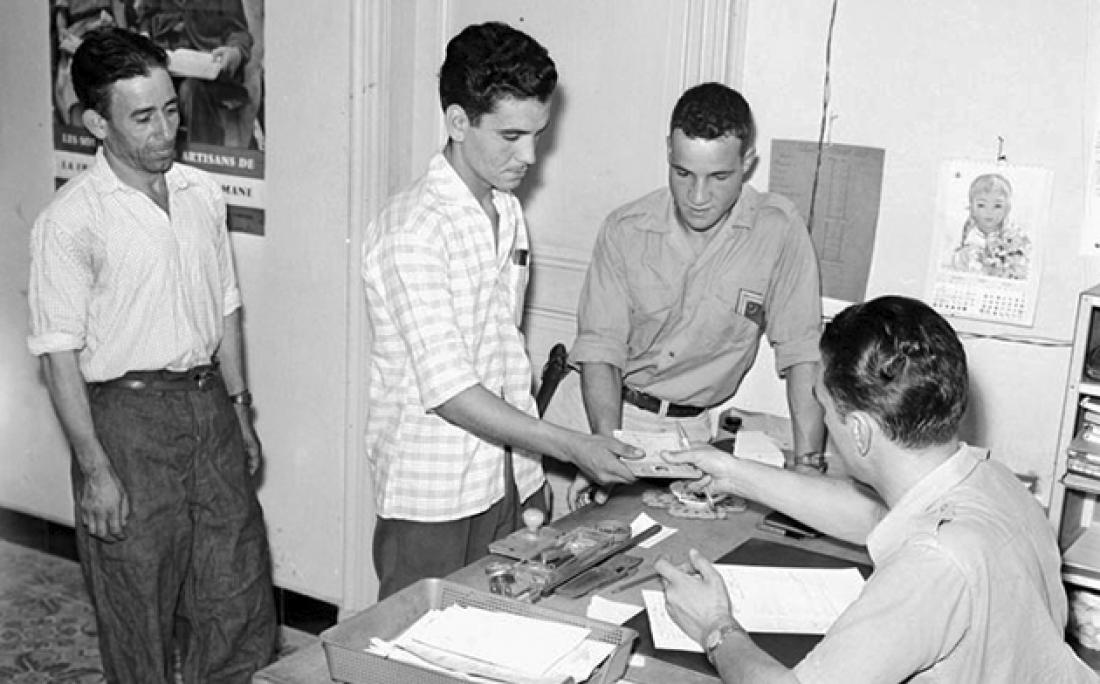
Of the words inherited from the French presence in Algeria, few are as emotionally charged as the word “harki”. Fifty years after Algerian independence, the story of the Algerian auxiliaries of the French Army still suffers from a number of preconceptions.
Strictly speaking, the harkis were auxiliaries recruited by the French Army during the Algerian war, between 1955 and 1962. These men were in some ways heirs to the native soldiers who, since 1831, had participated in the conquest of territory, then in maintaining order in the French colonies, alongside metropolitan troops. During the war of independence, besides the harkis, France recruited four other categories of Algerian auxiliaries, whose role remains difficult to assess.
Chronologically, the Groupes Mobiles de Police Rurale (GMPRs) were the first auxiliary units formed in Algeria (January 1955). Recruited primarily from among former combatants, they comprised 10 000 men in 1958 – a number which would not rise significantly after that. The GMPRs carried out light operations to secure the countryside, markets and lines of communication.
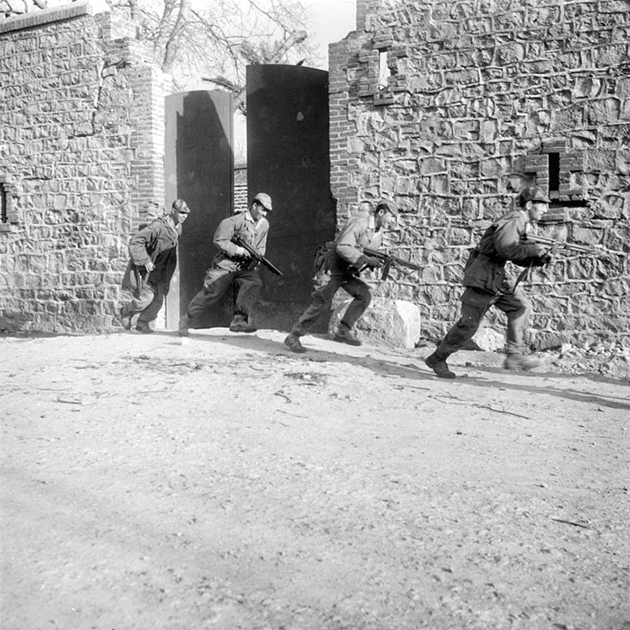
Newly recruited harkis train in La Cherrata, region of Constantine, February 1960. © ECPAD/Klerzkowski
In 1955, the army created a second type of auxiliary unit: the mokhaznis. Serving in makhzens of about 30 men, the mokhaznis were under the orders of the commanding officers of the Sections Administratives Spécialisées (SASs), newly created to make up for the shortcomings of the administration in the Algerian countryside. In 1958-59, there were approximately 20 000 mokhaznis. Their day-to-day missions – rural policing, intelligence gathering, participation in operations in the sector – were dependent on the chief SAS officer.
The simultaneous creation of the harkis and the Groupes d’Autodéfense (GADs) came later (1956). These “self-defence groups” were made up of villagers armed by the administration to provide their own security. Up to 30 000 weapons were distributed, although the operational contribution made by this kind of unit was limited. The harkis were Algerians recruited over a brief period to assist the French Army in operations carried out near their douar. While their temporary character did not survive the intensification of the war, the harkis nevertheless continued legally to be “day workers” until November 1961.
Lightly armed to begin with, they were gradually equipped with weapons of war – essentially, rifles and machine pistols. Their numbers continued to grow until they reached around 60 000 men between 1959 and 1961. That period, when General Challe was commander-in-chief in Algiers, was the peak of recruitment of Algerian auxiliaries by the French Army, throughout the colonial territory. The harkis were the most numerous and most operational – i.e. most involved in military “law enforcement” operations. For the officers commanding them, they were a back-up force for policing the interior. They mounted patrols and guards, conducted sweeps and operations, during which they might serve as scouts, skirmishers, reinforce a section or form their own sections.
Like most of the other auxiliaries, the harkis were, in theory, recruited locally. Many officers expected them to inform them about nationalist activities in their sector. A minority of harkis also took part in infiltration or “nomadisation” missions in the interior – particularly in the “Commandos de Chasse”, between 1959 and 1961, or in the famous “Commando Georges”. Some 3 000 of them lost their lives on these missions, which shows how fierce the confrontations were.
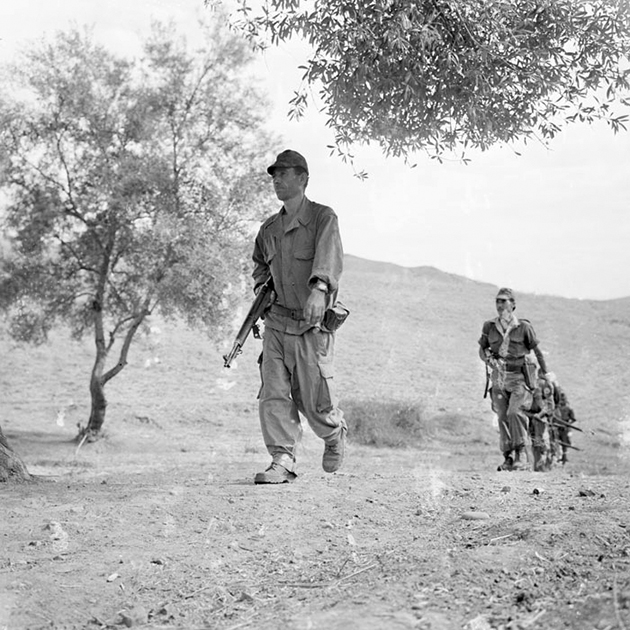
New harki recruits patrol the sector in the Palestro region, September 1959. © ECPAD/Berges
The question of the auxiliaries’ motivations remains one of the most debated. Since 1962, a number of reasons have been put forward, all of which are corroborated by the facts: patriotism (loyalty to France – or, more broadly, to law and order), the pressures exerted by the French Army (forced recruitment), pay (economic motivation), reaction to the acts of violence committed by the National Liberation Front (FLN). In order to understand how tens of thousands of Algerians chose to side with forces aimed at maintaining the colonial order, these explanations need to be complemented and put into their socio-economic context. For a better grasp of how heads of household and breadwinners came to join up, account must be taken of the social and family context, in what was a strongly hierarchical rural society. Furthermore, that society was marked by the military strategy employed by France in Algeria. To cite just one example, mass population displacements, caused by the creation of “no-go” areas and the resettlement of communities, had a drastic impact on traditional social ties and worsened rural poverty, already appreciable before the war. In this context, the auxiliaries’ pay can be seen as one of a number of a forms of aid to Algeria’s rural society.
Equally appreciable, accounts of the violence committed when Algeria gained its independence leave a series of question marks. Despite an initial drop in numbers in 1961, 40 000 harkis were still armed in March 1962, even after the signing of the Évian Accords. Their demobilisation was chaotic, involving desertions, disarmament and acts of violence. Between March and July 1962, French Army camps in Algeria took in thousands of “Algerians at risk” – mostly former harkis and their families, but also former MPs and councillors, civil servants and other auxiliaries. The outcome was the transfer of some 10 000 “French Muslims” to metropolitan France in late June, just days before independence. In the same period, however, a number of ministries joined forces to limit the number of former harkis who could settle in France. On the grounds of fear of the OAS, the need to control migration or the difficulties integrating them into metropolitan French society, ministers Pierre Messmer (Armed Forces), Louis Joxe (Algeria), Robert Boulin (Repatriates) and Roger Frey (Interior) issued their subordinates with various guidelines intended to restrict the immigration of former auxiliaries (primarily harkis and mokhaznis).
In the spring, the acts of violence began. To begin with, they were limited to former auxiliaries, as well as former MPs and councillors, civil servants and their families. In common parlance – particularly in the press hostile to de Gaulle, which echoed the violence – the meaning of the term “harki” changed, to refer to any “French person of North African descent” (FSNA) at risk from the FLN because of their stance during the war.
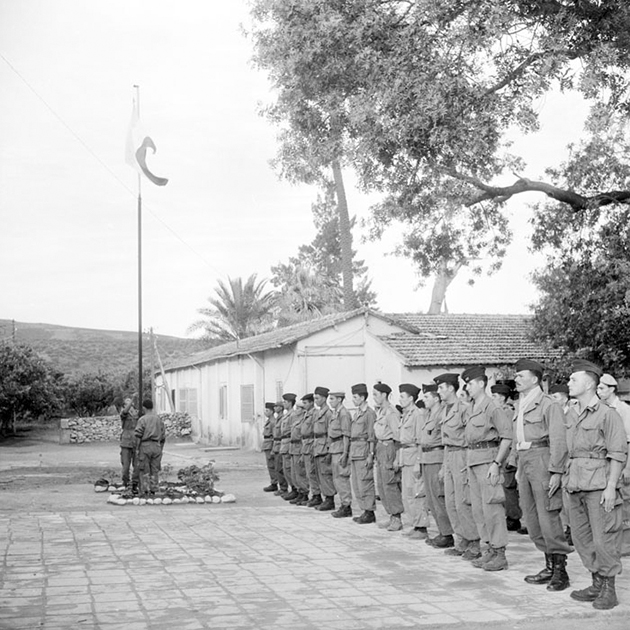
Harkis take part in a retreat ceremony, Hammam Meskoutine training centre, near Constantine, November 1959. © ECPAD/Antoine
After independence, acts of violence became widespread throughout Algeria. The region worst hit by the violence was the east, where it persisted until late 1962. Even today, there are no precise figures for how many people were affected. During the early months of Algerian independence, tens of thousands of Algerians were killed, dispossessed of their property or imprisoned. Among the latter, thousands were put to work demining the barricades erected by the French Army a few years earlier on the Moroccan and Tunisian borders. By September, Ahmed Ben Bella had stabilised his power in Algiers. Gradually over the winter, the violence ceased. The French Army went on with its mission to receive and transport migrants. In all, 27 000 Algerians would be displaced by military means by the end of 1963. In the meantime, however, a further 30 000 to 40 000 people at risk either made their own way to metropolitan France or were helped by former officers, revealing the inadequacy of the official transfer plan. The refugees were housed in hastily erected camps, ill-suited to a prolonged stay. Forty-one thousand “harkis” would pass through these camps. An order dated 21 July 1962 stripped them of their French nationality. To become French citizens once more, they had to sign a declaration recognising their citizenship, validated by a judge. From a strictly legal standpoint, they were “French repatriates from Algeria”. In practice, however, a series of regulations deprived them of the same rights as the pieds noirs until the 1980s.


